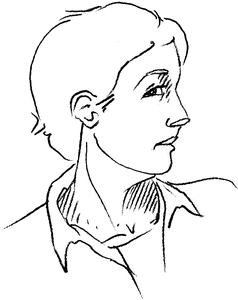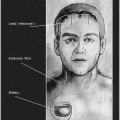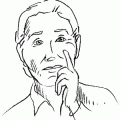and Kelvin L. Chou2
(1)
Parkinson’s Clinic of Eastern Toronto & Movement Disorders Centre, Toronto, ON, Canada
(2)
Michigan House, University of Michigan Medical School, Ann Arbor, MI, USA
Keywords
HistoryExaminationInvestigationsRating scalesHistorical Considerations
When obtaining a history, the clinician should pay attention to the points brought out in Chap. 1, namely: the positional properties of the tremor (rest vs. action) and body region affected. Remember, ET is an action tremor, typically involving the hands first [1, 2]. A positive family history and alcohol responsiveness are factors that support the diagnosis of ET, though do not need to be present for the diagnosis to be made [3].
Other considerations include the nature of tremor onset. ET tends to have a gradual onset, while an abrupt onset may signal an underlying psychogenic cause [4]. The medication list should be closely looked at for any medications that cause tremor. Finally, a careful review of systems should be conducted, focusing on ruling out symptoms that might be seen with other tremor disorders, such as parkinsonism (slowness of movement, shuffling gait, micrographia, etc.), thyroid problems (diaphoresis, tachycardia, palpitations, weight loss), or dystonia (pulling sensations or muscle contractions).
Physical Examination
In addition to a general neurological examination, the following steps may be helpful to specifically assess for essential tremor.
Get Clinical Tree app for offline access

1.
Asking the patient to hold arms straight outstretched, extended at elbows with fingers spread apart. See Fig. 3.1.
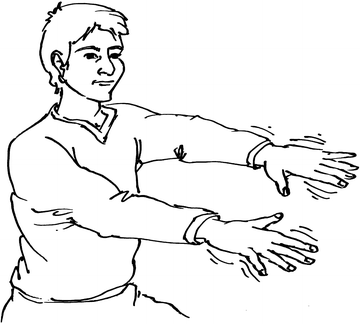

Fig. 3.1
Outstretched position of hands in postural tremor (Image courtesy of Evelyn Shifflett)
2.
Holding arms with fingers spread apart, flexed at elbows in front of the chest (wing beating position). See Fig. 3.2.
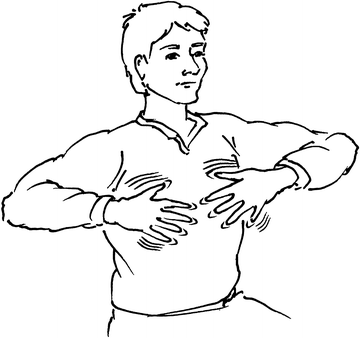

Fig. 3.2
Wing beating position of hands in postural tremor (Image courtesy of Evelyn Shifflett)
3.
With arms in the wing beating position, have the patient make a fist with both hands while leaving the index finger of each hand extended, pointing towards each other in close proximity without touching (author calls this “One to One test”). This may help assess subtle cases of postural tremor. See Fig. 3.3.
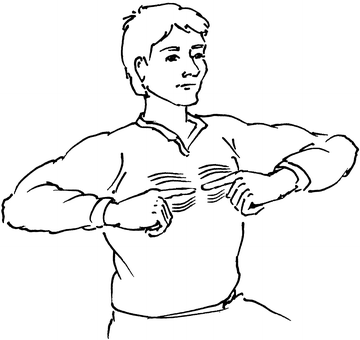

Fig. 3.3
One to one test (Image courtesy of Evelyn Shifflett)
4.
Finger-Nose-Finger testing.
5.
Asking the patient to hold a cup, at least four inches tall, full of water (up to one inch from the top) and to bring it to their lips and then away from their mouth a few times to see if there is any spillage of water (glass test). Pouring of liquids may also be tested.
6.
Writing a standard sentence on each visit. The new writing sample on each visit is then compared to the writing sample from the previous visit in order to assess therapeutic response. See Fig. 3.4.


Fig. 3.4
Handwriting sample of a patient with very mild essential tremor (Today is a sunny day in Toronto)
7.
Drawing a spiral without supporting the hand on each visit and comparing the drawing to the one from previous visit in order to assess therapeutic response. See Fig. 3.5.
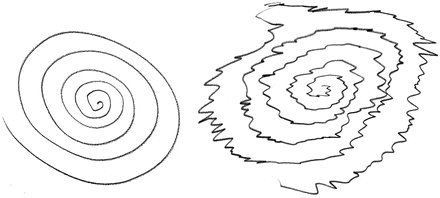

Fig. 3.5
Spiral drawing by the examiner (left) and a patient (right) with essential tremor (Spiral Test)
8.
Examining for facial tremor in the half- hearted smile.
9.
Determining involvement of the voice by sustained phonation and asking the patient to hold a prolonged note such as “EEEEEEEEEEEEE.” Sustained phonation may also activate or increase a head tremor.
10.
Inspecting the head carefully for tremor as well as for any abnormal position, such as a turn (torticollis) or tilt (laterocollis) to any side, anterocollis (forward bending) or retrocollis (backward bending) and sagittal or lateral shift of head which may be seen in cervical dystonia. (See Fig. 3.6.) The clinician may find it helpful to inspect the patient from front, behind, as well as from each side, standing at a distance of a few feet from the patient to determine the abnormal head or neck position. Mild head tremor may be easily missed unless the head is specifically examined. Asking the patient to close their eyes for a few minutes, and allowing their head do what it likes to do may enhance the examination. Neck muscles should be inspected and palpated for any asymmetry in size if dystonic head tremor (cervical dystonia) is suspected.

